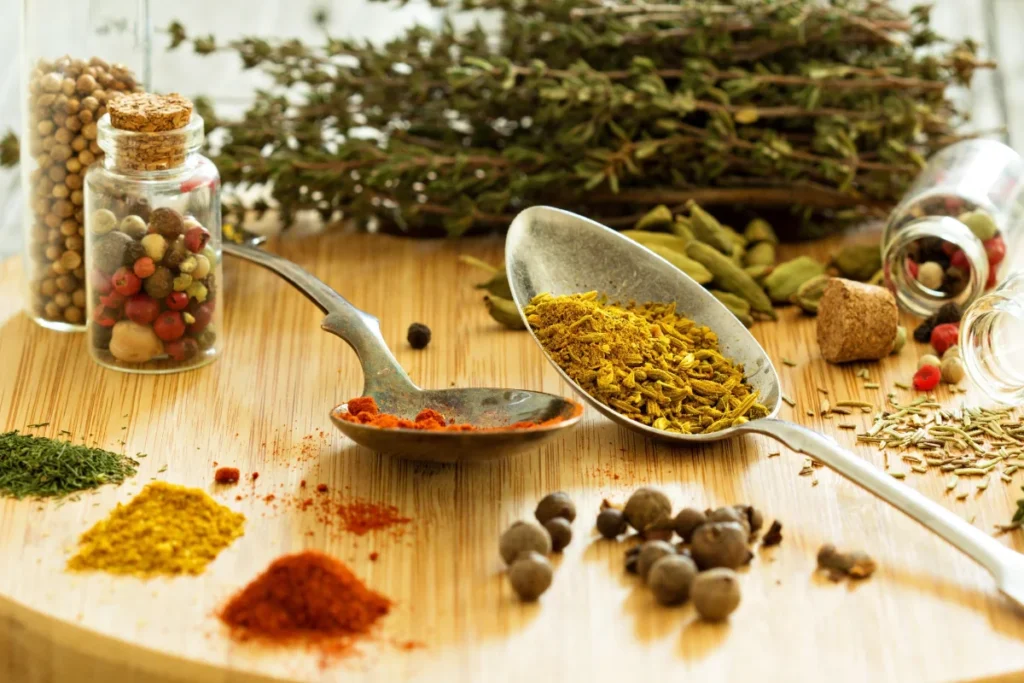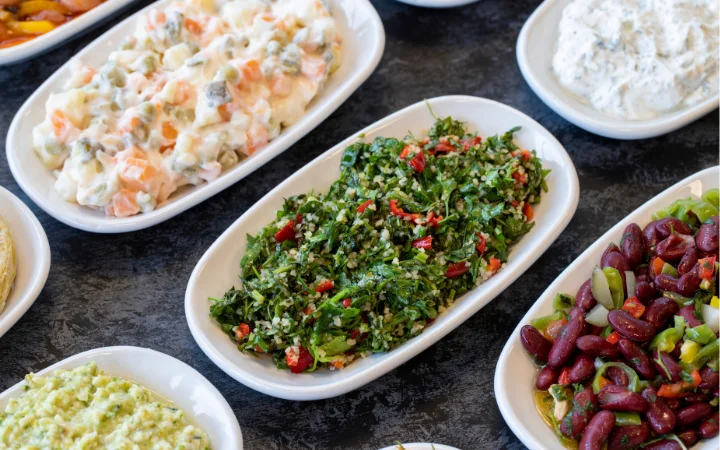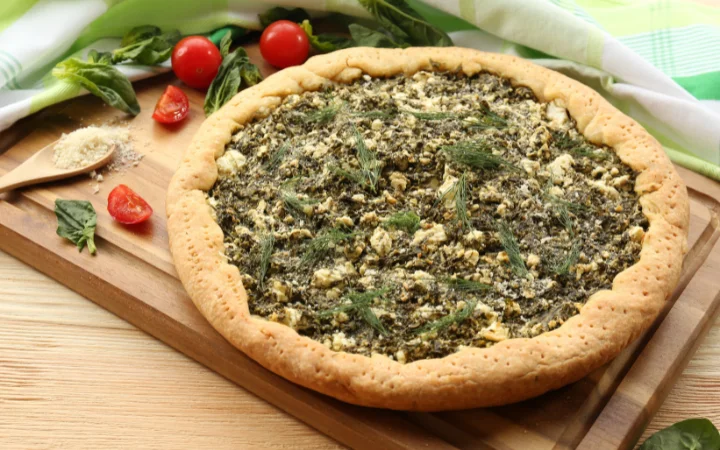Introduction to Chimichurri Seasoning
Chimichurri seasoning, a staple in Argentinian cuisine, is a vibrant and flavorful condiment that has captured the hearts of food enthusiasts worldwide. Learn more about its variations and uses on Allrecipes – What Is Chimichurri? This uncooked herb sauce, known for its fresh and tangy taste, is a versatile addition to various dishes, enhancing flavors and adding a unique twist.
Origin and Popularity
Chimichurri’s roots trace back to Argentina, where it’s traditionally used as a companion to grilled meats. For a deeper dive into this sauce’s cultural significance, check out our Chimichurri: The Ultimate Guide to Argentina’s Flavorful Sauce. Its popularity has spread across South America and, more recently, around the globe. The sauce’s simple yet robust flavor profile, combined with its ease of preparation, has made it a favorite among home cooks and professional chefs alike.
Green vs. Red Chimichurri
There are two main types of chimichurri: green and red. The green chimichurri is a blend of olive oil, red wine vinegar, finely chopped parsley, oregano, garlic, and seasonings, as detailed on The Seasoned Home – Chimichurri Seasoning. It’s known for its fresh, herbaceous flavor and is commonly used as a marinade or sauce for grilled meats.
On the other hand, red chimichurri packs a spicier punch. It includes all the ingredients of the green version but with the addition of smoked paprika, dried red chili, cayenne pepper, or pepper flakes. Some variations also incorporate red bell pepper, adding a sweet and smoky dimension to the sauce.
Both versions of chimichurri offer a unique taste experience, and their versatility makes them a must-try for any culinary enthusiast. Discover more about this seasoning in our detailed article, Chimichurri Seasoning: Explore Argentina’s Flavorful Secret. In the next section, we’ll dive into the key ingredients that make up this delightful seasoning, providing a deeper understanding of what gives chimichurri its distinctive flavor.

Ingredients of Chimichurri Seasoning
The magic of chimichurri lies in its blend of simple, yet flavorful ingredients. Each component plays a crucial role in creating the sauce’s distinctive taste. Let’s break down these key ingredients and discover how they come together to form the perfect chimichurri.
Olive Oil
Olive oil serves as the base of chimichurri, providing a smooth and rich texture. It’s essential for balancing the acidity of the vinegar and the bold flavors of the herbs and spices. The type of olive oil used can influence the overall taste of the sauce, with extra virgin olive oil offering a more pronounced flavor.
Red Vinegar
Red vinegar adds a tangy and slightly sweet note to chimichurri. Its acidity cuts through the richness of the olive oil and enhances the freshness of the herbs. This ingredient is key to achieving the perfect balance of flavors in the sauce.
Parsley
Parsley is the star herb in chimichurri, contributing a fresh and slightly peppery taste. It’s typically used in abundance, giving the sauce its characteristic green color and vibrant flavor. Flat-leaf parsley is preferred for its more intense flavor compared to curly parsley.
Oregano
Oregano brings a hint of earthiness and a slightly bitter, aromatic quality to chimichurri. This herb complements the parsley and adds depth to the sauce’s flavor profile. Both fresh and dried oregano can be used, with fresh oregano offering a more potent taste.
Garlic
Garlic is a key ingredient in chimichurri, providing a pungent and slightly spicy flavor. It’s usually finely chopped or minced to distribute its taste evenly throughout the sauce. The amount of garlic can be adjusted to personal preference, but it’s an essential component for an authentic chimichurri.
Additional Ingredients in Red Chimichurri
Red chimichurri includes all the ingredients of its green counterpart but with a few spicy additions, which you can explore further at Spice Jungle – Chimichurri Blend. Smoked paprika, dried red chili, cayenne pepper, or pepper flakes are commonly used to give the sauce a fiery kick. Some recipes also incorporate red bell pepper for a touch of sweetness and color.
In the next part of our guide, we’ll explore how to make chimichurri seasoning, covering both traditional and modern methods. Whether you’re a novice cook or a seasoned pro, you’ll find that creating this flavorful sauce is easier than you might think.
Making Chimichurri Seasoning
Creating chimichurri seasoning is a delightful culinary adventure that combines simplicity with the art of flavor balancing. Whether you prefer the traditional method or a more modern approach using a food processor, making chimichurri is an easy and rewarding process.
Traditional Method
The traditional way of making chimichurri involves finely chopping the herbs and garlic by hand. This method allows for a more rustic texture and lets you control the fineness of the ingredients. To start, finely chop fresh parsley, oregano, and garlic. In a bowl, whisk together olive oil and red wine vinegar, then add the chopped herbs and garlic. Season with salt and pepper to taste. For red chimichurri, include the additional spicy ingredients like smoked paprika and red chili flakes. Let the mixture sit for a few hours or overnight to allow the flavors to meld together.
Using a Food Processor
For a quicker and more uniform texture, a food processor can be used to make chimichurri. Simply add parsley, oregano, garlic, and any additional spices for red chimichurri into the food processor. Pulse until the herbs are finely chopped but not pureed. Transfer the mixture to a bowl and stir in olive oil and red wine vinegar. Season with salt and pepper, and let it rest to develop the flavors.
Both methods result in a delicious chimichurri seasoning that can elevate any dish. The key is to balance the flavors and allow enough time for them to infuse into the oil and vinegar.
In the next part of our guide, we’ll explore the various culinary uses of chimichurri seasoning. From traditional pairings to creative culinary applications, chimichurri is a versatile sauce that can transform the simplest of dishes into something extraordinary.

Culinary Uses of Chimichurri Seasoning
Chimichurri seasoning is not just a sauce; it’s a culinary chameleon, adaptable to a wide range of dishes. Its vibrant flavor can enhance everything from grilled meats to vegetarian dishes, making it a versatile addition to any kitchen.
As a Marinade
One of the most popular uses of chimichurri is as a marinade for meats, and it’s also fantastic with fish, as showcased in our Chimichurri Salmon Recipe: A Flavorful Culinary Adventure. The combination of olive oil, vinegar, and herbs tenderizes the meat while infusing it with flavor. It’s particularly well-suited for beef, but it also works wonders on chicken, pork, and fish. Simply coat your choice of meat with the chimichurri and let it marinate for a few hours before cooking.
As a Sauce
Chimichurri is also commonly used as a sauce, drizzled over grilled meats like steak, chorizo, or roast beef. For a homemade chimichurri sauce recipe, visit Little Spice Jar. Its bright, tangy flavor cuts through the richness of the meat, providing a refreshing contrast. But don’t stop there; chimichurri can also be used as a topping for vegetables, a dressing for salads, or a dip for bread.
Other Creative Uses
The versatility of chimichurri extends beyond the grill. Mix it into pasta for an herby twist, spread it on sandwiches for an extra zing, or stir it into rice or quinoa for a flavorful side dish. You can even use it as a base for a vibrant herb pilaf. The possibilities are endless, and experimenting with chimichurri in different dishes can lead to delightful culinary discoveries.
In the next part of our guide, we’ll explore the various variations and customizations of chimichurri seasoning. Whether you’re looking to stick to traditional recipes or get creative with your own twists, there’s a version of chimichurri for everyone.

Variations and Customizations
Chimichurri is a sauce that invites creativity and personalization. While the traditional recipe is a great starting point, there are numerous ways to tweak and adapt it to suit different tastes and cuisines. Let’s explore some of the variations and customizations that can be made to this versatile sauce.
Regional Variations
Across South America, chimichurri is made with slight regional variations. In Argentina, the focus is on parsley and oregano, while in Uruguay, chimichurri might include red bell pepper for added sweetness and color. Some regions prefer a spicier version, adding more chili flakes or fresh chilies to the mix. These regional differences highlight the adaptability of chimichurri to local tastes and ingredients.
Personal Customizations
Personalizing chimichurri is all about adjusting the ingredients to your liking. If you prefer a more garlicky flavor, add extra garlic. For a tangier sauce, increase the amount of vinegar. You can also experiment with different herbs, such as cilantro or basil, to create a unique flavor profile. If you’re looking for a spicier kick, incorporate more red chili flakes or a dash of hot sauce. The beauty of chimichurri is that it’s a forgiving sauce, allowing for adjustments and experimentation.
In the next part of our guide, we’ll address some frequently asked questions about chimichurri seasoning. From storage tips to spice level adjustments, we’ll provide answers to common queries to help you make the most of this delightful sauce.

Frequently Asked Questions
Chimichurri seasoning, with its growing popularity, often raises questions about its preparation, usage, and storage. For more detailed information, check out Chimichurri on Wikipedia. Here, we address some of the most frequently asked questions to help you better understand and enjoy this versatile sauce.
What is the difference between green and red chimichurri?
The primary difference lies in their ingredients and flavor profiles. Green chimichurri, the classic version, is made with parsley, oregano, garlic, olive oil, and red wine vinegar, resulting in a fresh, herbaceous taste. Red chimichurri includes the same base ingredients but with the addition of spicy elements like smoked paprika, dried red chili, cayenne pepper, or pepper flakes, giving it a bolder, spicier flavor.
Can I use dried herbs for chimichurri seasoning?
Yes, you can use dried herbs, but the flavor will be different from using fresh herbs. Dried herbs are more concentrated and intense, so you’ll need to use them in smaller quantities. The texture of the sauce will also be less vibrant compared to using fresh herbs.
How long can I store chimichurri seasoning?
Chimichurri can be stored in an airtight container in the refrigerator for up to a week, and for more storage tips, visit Grate Grinds – Chimichurri Seasoning. The flavors will continue to meld and develop over time. It’s best to let the sauce come to room temperature before serving to allow the olive oil to loosen.
Is chimichurri seasoning spicy?
Traditional green chimichurri is not typically spicy; it’s more herbaceous and tangy. However, red chimichurri has a spicy kick due to the addition of chili flakes or cayenne pepper. You can adjust the spice level to your preference by altering the amount of these ingredients.
Can chimichurri seasoning be used as a salad dressing?
Absolutely! Chimichurri makes a fantastic salad dressing, adding a fresh and tangy flavor to greens. It pairs well with robust salads featuring ingredients like grilled vegetables, beans, or grains. You can thin it out with a bit more vinegar or lemon juice if desired.
In the final part of our guide, we’ll wrap up with a conclusion that summarizes the key points about chimichurri seasoning and its versatility in the culinary world.
Conclusion
Chimichurri seasoning, a gem in the culinary world, is more than just a sauce—it’s a celebration of fresh flavors and versatility. Originating from Argentina, this vibrant condiment has made its way into kitchens worldwide, captivating palates with its unique blend of herbs, garlic, olive oil, and vinegar. Whether you prefer the classic green chimichurri or the spicier red variant, this sauce adds a delightful touch to a wide array of dishes.
From its use as a marinade for meats to a flavorful addition to vegetables, salads, and even bread, chimichurri’s adaptability knows no bounds. Its simplicity in preparation, whether through traditional chopping or using a food processor, makes it accessible to cooks of all skill levels. The ability to customize the ingredients to personal taste preferences further enhances its appeal, allowing for endless culinary experimentation.
As we’ve explored in this guide, chimichurri is not just a sauce but a culinary adventure. It invites you to explore different flavors, adjust spice levels, and experiment with various herbs. Whether you’re grilling steaks, roasting vegetables, or simply looking for a new salad dressing, chimichurri is a versatile and flavorful choice.
In conclusion, chimichurri seasoning is a testament to the power of simple ingredients coming together to create something extraordinary. Its fresh, tangy, and sometimes spicy flavors can elevate any dish, making it a must-try for anyone looking to add a burst of flavor to their cooking. So, grab your parsley, oregano, garlic, and olive oil, and embark on your own chimichurri journey. The possibilities are endless, and the flavors are unforgettable.

